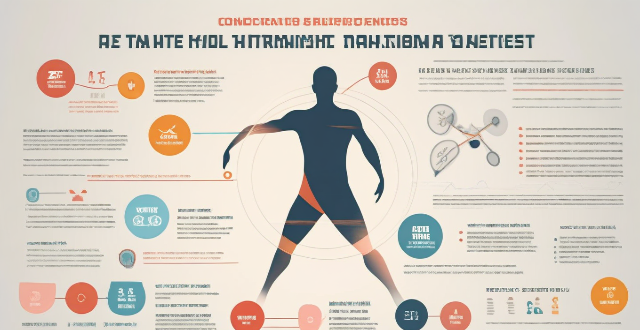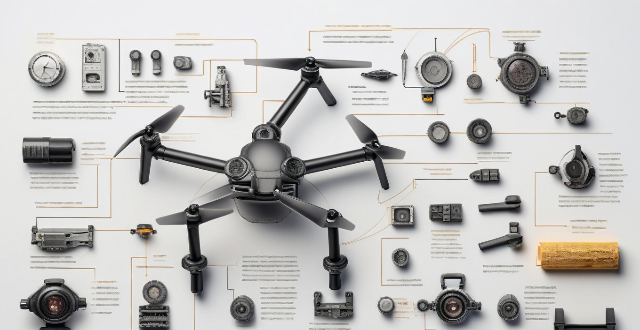Technology Analysis

What is sports technology analysis ?
Sports technology analysis is a process of using advanced technologies to collect, analyze, and interpret data related to sports performance. The goal of sports technology analysis is to improve athletic performance, enhance coaching effectiveness, and optimize team management. Key areas of sports technology analysis include biomechanics, physiology, video analysis, wearable technology, and data analytics. By utilizing these tools and techniques, coaches can gain valuable insights into athletes' physical abilities, training methods, equipment usage, and game strategies. This leads to better overall performance and increased success in competitions. Sports technology analysis also enhances coaching effectiveness by providing coaches with detailed information about athletes' strengths and weaknesses, allowing them to develop more effective training programs that target specific areas for improvement. Additionally, sports technology analysis helps optimize team management by monitoring players' workloads and fitness levels through wearable technology and other tracking systems. Overall, sports technology analysis is a powerful tool that allows coaches to make more informed decisions about player development, game strategies, and team management.

How accurate is sports technology analysis ?
Sports technology analysis has become increasingly popular in recent years, with the development of advanced technologies such as sensors, wearable devices, and machine learning algorithms. These technologies are used to collect and analyze data from athletes' performance during training and competitions, providing valuable insights into their physical condition, technique, and strategy. However, the accuracy of sports technology analysis is a topic of debate among experts. In this article, we will explore the factors that affect the accuracy of sports technology analysis and discuss its limitations.

How has sports technology analysis evolved over time ?
The evolution of sports technology analysis has transformed the way we understand and improve athletic performance. From manual methods to advanced analytics, wearable technology, and artificial intelligence, coaches and analysts now have access to more accurate and comprehensive data than ever before. This has allowed for more informed decision-making and optimized training programs, ultimately leading to better overall performance in sports.

What are some examples of sports technology analysis tools ?
Sports technology analysis tools are essential for improving performance, preventing injuries, and gaining a competitive edge in sports. These tools use advanced technologies like sensors, cameras, and software to collect, analyze, and visualize data related to sports performance. Examples of sports technology analysis tools include wearable devices, video analysis software, biomechanical assessment tools, performance tracking systems, injury prevention tools, and training apps and online platforms. These tools provide valuable insights into athletic performance, help prevent injuries, and enhance overall well-being.

How does sports technology analysis help athletes improve their performance ?
Sports technology analysis is a crucial tool for athletes to enhance their performance by leveraging advanced technologies. It helps in data collection and analysis, video analysis, biomechanical analysis, virtual reality training, and recovery tracking. By collecting vast amounts of data through wearable devices, sensors, and cameras, athletes can track various metrics such as heart rate, speed, distance, and power output. Video analysis provides a visual representation of an athlete's performance, identifying technical errors or areas for improvement in their technique or strategy. Biomechanical analysis studies the mechanics of human movement to optimize athletic performance, using specialized equipment to analyze an athlete's movements. Virtual reality training simulates game scenarios and provides realistic training environments, allowing athletes to practice and refine their skills in a controlled setting. Recovery tracking monitors an athlete's physiological responses during recovery periods, ensuring that they are adequately rested and ready for competition or training sessions. Overall, sports technology analysis enables athletes to make data-driven decisions that lead to improved outcomes.

What are the benefits of using sports technology analysis in training ?
Sports technology analysis has revolutionized training for athletes and coaches by providing valuable insights into performance, injury prevention, personalized training programs, and increased motivation. Sensors, cameras, wearable devices, and other tools capture data on various aspects of an athlete's performance, such as speed, power, agility, and endurance. This data can be analyzed to identify areas for improvement and develop targeted training plans. Additionally, monitoring an athlete's movements and biomechanics during training sessions helps detect potential issues that may lead to injuries, allowing coaches to modify their training programs accordingly to reduce the risk of injury. Sports technology analysis also enables coaches to create personalized training programs tailored to each athlete's specific needs and goals. Analyzing data collected from various sources helps identify strengths and weaknesses in an athlete's performance, leading to faster progress and better results for individual athletes. Finally, incorporating technology into training sessions makes workouts more enjoyable and engaging for athletes, ultimately leading to greater adherence to their training programs.

What kind of equipment is needed for sports technology analysis ?
The article discusses the various types of equipment needed for sports technology analysis, including video cameras, wearable devices, force plates, radar guns, and software applications. These tools are essential for capturing and processing data effectively to gain insights into athletes' performances and help coaches make informed decisions.

How has the use of wearable technology impacted sports data analysis ?
Wearable technology has revolutionized sports data analysis by enabling real-time performance monitoring, injury prevention, training optimization, and strategic decision-making. Athletes can receive immediate feedback on their performance metrics, while coaches can tailor training loads and develop game plans based on accurate data. Wearables also aid in injury prevention and recovery tracking. Fan engagement is enhanced through interactive experiences and broadcast enhancements. Future developments include advanced analytics and integration with other technologies. Overall, wearable technology has significantly transformed sports data analysis for the betterment of athletes' health, performance, and team strategies.

In what ways can technology be utilized to enhance sports biomechanics analysis ?
Technology has revolutionized sports biomechanics analysis, providing new tools and methods for coaches, athletes, and researchers. Video analysis software allows frame-by-frame review of performances, wearable technology provides real-time data on an athlete's physiology, force plates measure ground reaction forces, motion capture systems track movements in three dimensions, and computer simulation modeling creates virtual models of an athlete's movements. These technologies have made it easier than ever before to collect and analyze data on an athlete's performance, leading to improved training programs, injury prevention, and overall performance optimization.

What are the latest trends and advancements in climate data analysis technology ?
Latest Trends and Advancements in Climate Data Analysis Technology Climate data analysis has become increasingly important in recent years as scientists work to understand the impact of climate change on our planet. With advancements in technology, new methods for analyzing this data have emerged, leading to a better understanding of the complexities of the climate system. Here are some of the latest trends and advancements in climate data analysis technology: Artificial Intelligence and Machine Learning: One of the most significant developments in climate data analysis is the use of artificial intelligence (AI) and machine learning (ML). These technologies can process vast amounts of data quickly and accurately, allowing researchers to identify patterns and trends that would be difficult or impossible to detect manually. For example, AI and ML algorithms can analyze satellite images to track changes in ice coverage or monitor deforestation rates. Big Data Analytics: The volume of climate data available today is enormous, and big data analytics tools are essential for managing and interpreting this information. These tools can help researchers identify correlations between different variables, such as temperature changes and extreme weather events. They can also be used to create predictive models that forecast future climate conditions based on current trends. Cloud Computing and Remote Sensing: Cloud computing has made it possible for researchers to access and share large datasets from anywhere in the world. This has led to increased collaboration among scientists working on climate-related projects. Remote sensing technologies, such as drones and satellites, are also being used more frequently to collect climate data. These tools can provide real-time information about changes in the environment, allowing researchers to respond quickly to emerging issues. Blockchain Technology: Blockchain technology is another promising development in climate data analysis. By using a distributed ledger system, blockchain can ensure that climate data is secure, transparent, and immutable. This means that once data is recorded on the blockchain, it cannot be altered or deleted, ensuring its integrity over time. Additionally, blockchain can facilitate the sharing of climate data across organizations and countries without compromising security or privacy concerns. Citizen Science and Crowdsourcing: Citizen science and crowdsourcing initiatives have become increasingly popular ways to gather climate data. These programs involve members of the public in collecting and contributing data about their local environments. By harnessing the power of crowdsourcing, researchers can gather vast amounts of data from diverse locations around the world, providing valuable insights into global climate patterns and trends.

Can sports technology analysis be used to prevent injuries ?
In sports, injuries are common but unwelcome. With advancements in technology, there's a growing interest in using sports technology analysis for injury prevention. This article delves into the subject, focusing on how technology aids in understanding and reducing sports-related injuries. The first step is data collection using sensors and wearable devices that track an athlete's movements, heart rate, speed, acceleration, and other relevant metrics during training and competition. Specialized software applications then perform biomechanical analyses to identify any irregularities or areas of concern in an athlete's movement patterns. These analyses can pinpoint specific actions that may be leading to increased stress on the body, which could potentially cause injuries if not addressed. Armed with insights from biomechanical analysis, coaches can design targeted training programs to correct any identified issues. This might involve specific strength and conditioning exercises, flexibility drills, or technique modifications aimed at reducing the risk of injury. Technology also enables real-time feedback during training sessions, allowing coaches and athletes to make adjustments on the spot to prevent incorrect movements that could lead to injury. Finally, tracking recovery metrics such as sleep quality, muscle soreness, and physiological stress markers helps coaches manage an athlete's workload more effectively. By preventing overtraining and ensuring adequate rest, the risk of chronic injuries and burnout can be significantly reduced. In conclusion, sports technology analysis can play a crucial role in preventing injuries by leveraging data collection, biomechanical analysis, preventive training, real-time feedback, and recovery monitoring. It's an ongoing process that requires constant vigilance and adaptation but offers significant benefits in terms of improved performance and longevity in sports.

How does technology impact credit management practices ?
Technology has revolutionized credit management practices by automating processes, enhancing data analysis capabilities, and streamlining communication channels. Automated credit scoring systems save time and reduce human error, while accounts receivable management software helps businesses track outstanding invoices and initiate collections actions if necessary. Technology also enables businesses to monitor changes in a borrower's creditworthiness in real-time, allowing them to make informed decisions about extending credit or adjusting terms. Enhanced data analysis tools like artificial intelligence and machine learning help businesses gain insights into customer behavior and make better-informed decisions about extending credit. Predictive analytics can identify potential risks, sentiment analysis gauges customer sentiment towards products or services, and fraud detection technology reduces the risk of financial losses due to credit card fraud or identity theft. Streamlined communication channels such as online portals, mobile apps, and chatbots powered by AI improve customer service and efficiency in credit management practices. Overall, technology has had a profound impact on credit management practices and will continue to do so as it evolves.

What is the difference between fundamental and technical analysis in the stock market ?
In the stock market, two primary methods of analysis are used by investors to evaluate stocks and make investment decisions: fundamental analysis and technical analysis. Each approach has its unique focus and methodology, leading to different conclusions and strategies for investing.

How can coaches use sports technology analysis to develop game strategies ?
Coaches can utilize sports technology analysis in numerous ways to develop game strategies. Key points include: 1. Data collection and analysis for player performance tracking and opponent research. 2. Utilizing video analysis software for tactical breakdowns and play design. 3. Conducting biomechanical assessments for injury prevention and performance optimization. 4. Implementing virtual reality (VR) training for simulated environments and skill development. 5. Using GPS and radio frequency identification (RFID) systems for movement analysis and load management. 6. Applying advanced statistics and analytics for deeper insights into performance and trend analysis. 7. Leveraging communication tools for instant feedback and strategy sharing. 8. Incorporating weather forecasting tools to adapt practices and prepare for game day conditions. 9. Employing recovery technology to monitor and enhance player recovery methods. 10. Integrating strength and conditioning apps for customized workouts and progress tracking. By incorporating these technological tools, coaches can make more informed decisions, improve player development, and gain a competitive edge during practices and games.

What are the limitations of climate data analysis ?
The article discusses the limitations of climate data analysis, including incompleteness of data, uncertainty in models, limited spatial resolution, bias in sampling, and natural variability. These limitations can impact the accuracy and reliability of the results obtained from climate data analysis. Despite these challenges, scientists continue to develop new methods and technologies to improve the accuracy and reliability of climate data analysis.

What is the role of macroeconomic indicators in stock market analysis ?
The article discusses the importance of macroeconomic indicators in stock market analysis, highlighting key indicators such as economic growth, inflation, interest rates, employment, and government policies. It suggests monitoring these indicators to identify trends and patterns that can impact the stock market, integrating this analysis with other tools for a comprehensive view.

What is the role of sentiment analysis in predicting stock market trends ?
Sentiment analysis is a crucial tool in predicting stock market trends by analyzing opinions and emotions from various sources. It involves data collection, preprocessing, feature extraction, model training, evaluation, and deployment. Sentiment analysis improves decision making, allows for real-time monitoring, identifies sentiment shifts, and aids in diversification of investment portfolios. However, challenges such as noise in data, sarcasm and irony, language variations, and evolving language usage must be addressed to maintain accuracy.

What role does technology play in emergency response ?
The article discusses the various ways technology is used in emergency response, including communication via instant messaging platforms and two-way radios, GPS tracking for vehicles and personnel, data analysis for crime and fire trends, and the use of drones and robots. Technology has made emergency response more efficient and effective by improving communication, location tracking, data analysis, and automation.

What role does technology play in climate adaptation ?
The article discusses the various ways in which technology can aid in climate adaptation. It mentions data collection and analysis, modeling and prediction, infrastructure development, agriculture and food security, water management, and health and well-being as key areas where technology is used. The article concludes that technology plays a crucial role in understanding and mitigating the challenges posed by climate change.

How can technology be used to monitor and predict climate conflicts ?
Climate conflicts, exacerbated by competition for natural resources, have significant impacts. Technology is crucial in monitoring and predicting these conflicts through satellite imagery, data analytics, GIS, social media monitoring, mobile technology, and collaboration platforms. These tools help in early warning, predictive modeling, mapping disputes, sentiment analysis, citizen reporting, information dissemination, and multi-sector coordination.

Can climate data analysis provide solutions to climate change problems ?
Climate data analysis is crucial for understanding climate change, predicting future scenarios, and developing solutions to mitigate its impact. It helps identify trends in temperature, precipitation, and other variables, predict changes in sea levels, extreme weather events, and ecosystem shifts. Solutions derived from this analysis include transitioning to renewable energy, improving energy efficiency, promoting sustainable forestry and agriculture, and international cooperation on climate action.

How does AI technology help with injury prevention in sports ?
AI technology is revolutionizing sports injury prevention by providing valuable insights into an athlete's physical condition, performance, and risk factors. Through data analysis, real-time monitoring, biomechanical analysis, recovery support, and injury surveillance, AI technology helps coaches, athletes, and medical professionals take proactive steps to prevent injuries and promote safer sports environments.

What are some common mistakes made in stock market analysis ?
The text discusses common mistakes made in stock market analysis, including relying too heavily on past performance, ignoring market volatility, failing to consider external factors, focusing solely on technical analysis, emotional bias, inadequate diversification, neglecting tax implications, and overconfidence in predictions. To avoid these mistakes, analysts and investors should consider a range of factors beyond historical data, incorporate an understanding of market fluctuations into their analysis, take into account both internal and external influences, use a balanced approach that combines technical and fundamental analysis, maintain objectivity, diversify investments, be aware of tax implications, and remain humble and flexible when dealing with uncertain markets. By avoiding these mistakes, analysts and investors can make more informed decisions and potentially improve their chances of achieving successful outcomes in the stock market.

How do you identify potential investment opportunities through stock market analysis ?
The article outlines a step-by-step guide to identifying potential investment opportunities through stock market analysis. It begins with understanding the basics of the stock market and choosing between fundamental and technical analysis methods. The next step is conducting research on individual companies, including creating a watchlist, analyzing financial statements, evaluating management teams, and assessing industry trends. Technical analysis tools such as moving averages and RSI are then used to analyze price trends and patterns. Finally, setting up alerts and tracking performance helps in adjusting the portfolio based on new information or changing market conditions.

What is the importance of market trends in stock analysis ?
Market trends play a crucial role in stock analysis by providing insights into the overall direction and momentum of the market. There are three types of market trends: uptrends, downtrends, and sideways trends. Understanding market trends is essential for making informed investment decisions. By analyzing market trends, investors can identify potential opportunities and risks associated with specific stocks or sectors. To effectively use market trends in stock analysis, investors should first identify the current market trend and then analyze individual stocks or sectors relative to the overall market. Make informed investment decisions based on your analysis of market trends and individual stocks or sectors. Monitor changes in market trends and adjust your investment strategy accordingly.

Can you explain the process of credit analysis in credit management ?
Credit analysis is a crucial process in credit management that involves evaluating the creditworthiness of a borrower or a counterparty. The process includes gathering information on personal data, financial data, and credit history, analyzing this information through credit score analysis, financial statement analysis, and industry analysis, and determining creditworthiness based on capacity to repay, collateral, and covenant analysis. Finally, a decision is made on whether to extend credit to the borrower or not.

How can technology improve the process of climate information sharing ?
In this topic summary, we will discuss how technology can improve the process of climate information sharing. Technology has revolutionized the way we share and access information, including climate data. With advancements in technology, it is now easier than ever to collect, analyze, and disseminate climate information to a wide range of stakeholders. Data collection and analysis are crucial steps in the process of climate information sharing. Remote sensing, ground-based sensors, and data analysis software are some of the tools that can be used to collect and analyze climate data. These tools can help us monitor changes in climate patterns over time, identify trends and predict future climate events. Dissemination of climate information is another important step in the process. Online platforms, social media, and open data initiatives are some of the ways that climate information can be shared with researchers, policymakers, and the general public. These platforms can also offer interactive tools for visualizing and exploring the data. Collaboration and partnerships are also essential in improving the process of climate information sharing. Cloud-based collaboration tools, partnerships with tech companies, and crowdsourcing are some of the ways that researchers and stakeholders can work together on climate projects, sharing data and insights in real-time. In conclusion, technology plays a crucial role in improving the process of climate information sharing by enhancing data collection and analysis, facilitating the dissemination of climate information, and fostering collaboration among stakeholders. As technology continues to evolve, we can expect even more innovative solutions for addressing the challenges posed by climate change.

How has virtual reality technology been incorporated into sports equipment ?
The integration of virtual reality technology into sports equipment has revolutionized the way athletes train, perform, and recover from injuries. It also enhances fan engagement by providing unique perspectives of live sporting events. The main applications include simulation and training, performance analysis, rehabilitation and recovery, and fan engagement.

How can advancements in technology aid in more accurate virus origin tracing ?
The article discusses the role of technology in tracing virus origins, highlighting various techniques such as genomic sequencing, phylogenetic analysis, data mining, machine learning, satellite imagery, and remote sensing. These methods provide powerful tools for understanding how viruses evolve and spread over time, as well as identifying areas at risk for future outbreaks. The advancements in technology have revolutionized our ability to trace the origins of viruses, offering valuable insights into the ecological factors that contribute to virus emergence.

How have advancements in technology impacted sports equipment ?
Advancements in technology have significantly impacted sports equipment, revolutionizing materials, performance tracking, safety features, training methods, and customization options. Key areas of influence include: 1. **Material Innovations**: Introduction of lightweight and durable materials like carbon fiber and advanced plastics, as well as smart fabrics for performance wear and thermoregulation. 2. **Performance Tracking**: Development of wearable technology such as fitness trackers and GPS devices, along with biomechanical analysis tools like motion capture systems and sensor technology. 3. **Safety Enhancements**: Incorporation of impact sensors and smart concussion management in helmets, synthetic turf for fields, and energy-efficient LED lighting for courts. 4. **Training Aids**: Integration of Virtual Reality (VR) and Augmented Reality (AR) for simulation training and skill development, as well as data analytics for video analysis and biometric feedback. 5. **Equipment Customization**: Application of 3D printing for custom orthotics and jaw guards, and personalization of sports gear like batting gloves and cycling kits. These technological advancements continue to enhance athletic performance, safety, and enjoyment across various sports disciplines.